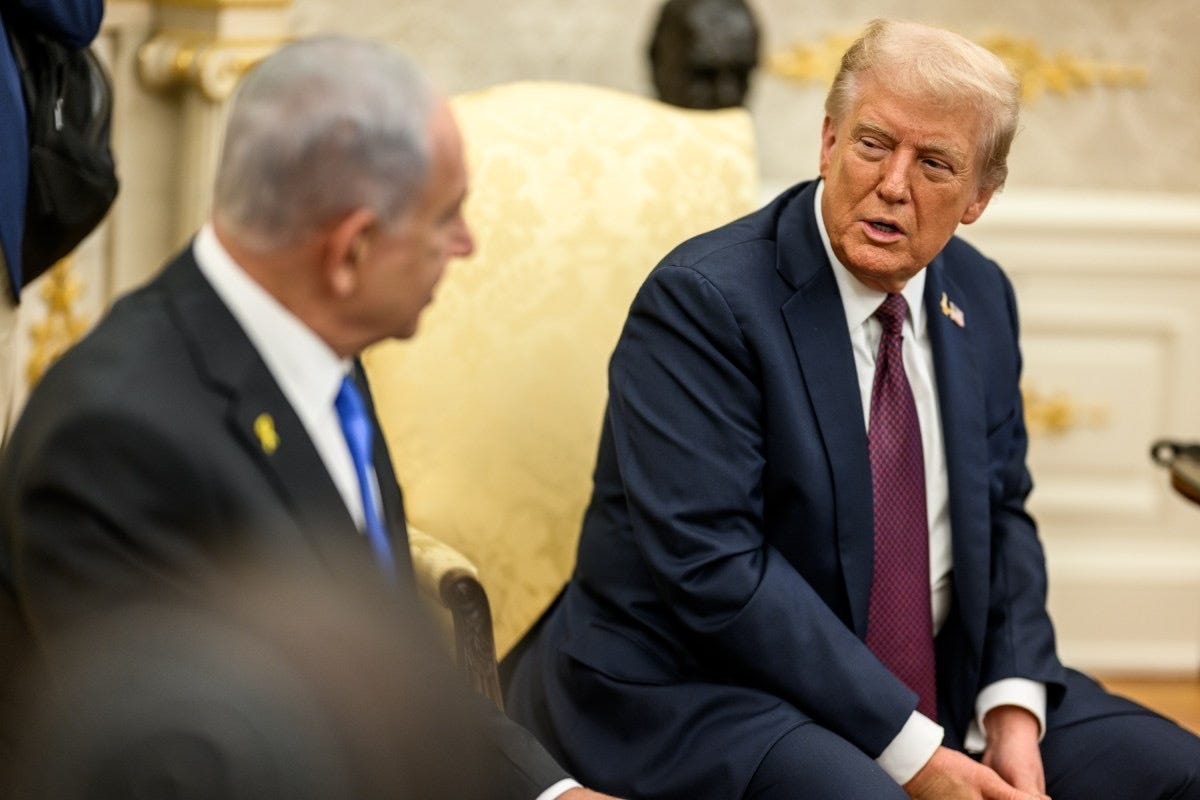Trump’s Gaza Peace Plan may end the war, but reveals deep concerns
Trump’s deal promises redevelopment and stability in Gaza, yet its vague clauses on governance and security raise fears of prolonged Israeli dominance.

After two years of death, destruction, starvation and displacement for Gaza’s 2.1 million people, the war-torn enclave appears to have finally reached its end.
The war between Hamas and Israel exposed the world to horrifying scenes of modern warfare through phone screens. After more than 67,000 Palestinians perished, the war is over—at least on paper.
Following a series of meetings with Arab, Muslim and Israeli leaders, U.S. President Donald Trump announced his Gaza Peace Plan on Sept. 29 at the White House alongside Israeli Prime Minister Benjamin Netanyahu.
To many observers’ surprise, Netanyahu said he would agree to the deal to end the war, despite repeatedly vowing to fight until Hamas was “eradicated.”
Two weeks later, on Oct. 10, a ceasefire officially began in Gaza. Videos across social media showed Palestinians celebrating with cheers and tears, many returning north to rebuild shattered homes.
Trump has often declared his wish to bring “lasting peace” to the Middle East—and for him, Gaza would be the centerpiece of that vision.
Originally called Trump’s 20-Point Peace Plan, the proposal brought hope to Palestinians mourning the loss of loved ones, homes and livelihoods. But its details reveal reasons for deep concern.
Several points in the deal appear sound and constructive: a “terror-free zone,” redeveloping Gaza “for the benefit of the people,” ending the fighting, releasing hostages and freeing 2,000 Palestinian prisoners. The plan also guarantees the flow of humanitarian aid and promises an Israeli withdrawal.
However, other provisions are deeply troubling.
While Israel is meant to withdraw, the cease-fire unfolds in stages. The first phase, which began Oct. 10, calls for Israeli forces to redeploy but remain inside Gaza. Even with “withdrawal,” Israeli forces still control roughly half of the enclave.
By the third stage, the language grows alarmingly vague. The same military that devastated Gaza would remain on its soil indefinitely.
The deal states that “Israel will not occupy or annex Gaza.” Yet it also grants Israel a “security perimeter presence” inside the strip for an unspecified time.
“Practically, the IDF will progressively hand over the Gaza territory it occupies to the ISF according to an agreement they will make with the transitional authority until they are withdrawn completely from Gaza, save for a security perimeter presence that will remain until Gaza is properly secure from any resurgent terror threat,” according to the deal.
Under this clause, Israel effectively maintains control of Gaza, despite language claiming otherwise.
Another alarming provision dictates that Gaza will not be governed by its own people—again, for an unspecified duration.
The deal reads that “Gaza will be governed under the temporary transitional governance of a technocratic, apolitical Palestinian committee” overseeing daily affairs. It also places Trump himself on the governing board, alongside former British Prime Minister Tony Blair—a figure widely distrusted in the region.
Blair is remembered for leading Britain into the Iraq War, which killed more than a million Iraqis and destabilized the region for decades. Many in the Middle East believe he should face trial for war crimes—yet he would now help govern Gaza.
The Trump administration reportedly plans to appoint other board members, none of whom are Muslim or Palestinian as of Oct. 13. Instead, unconfirmed reporting suggests that Jewish Americans with deep ties to Israel would be appointed.
The board would control Gaza until the Palestinian Authority, already governing parts of the territories under Israeli oversight, completes “necessary reforms” to resume power—another undefined timeline.
The Palestinian Authority is notoriously corrupt and deeply distrusted. Polls show nearly 85 percent of Palestinians oppose being ruled by it again.
For a plan claiming to bring “lasting peace,” Trump’s proposal leaves Gaza’s sovereignty, governance and future dangerously unclear. The war may be over—but the occupation, in all but name, appears set to continue.

